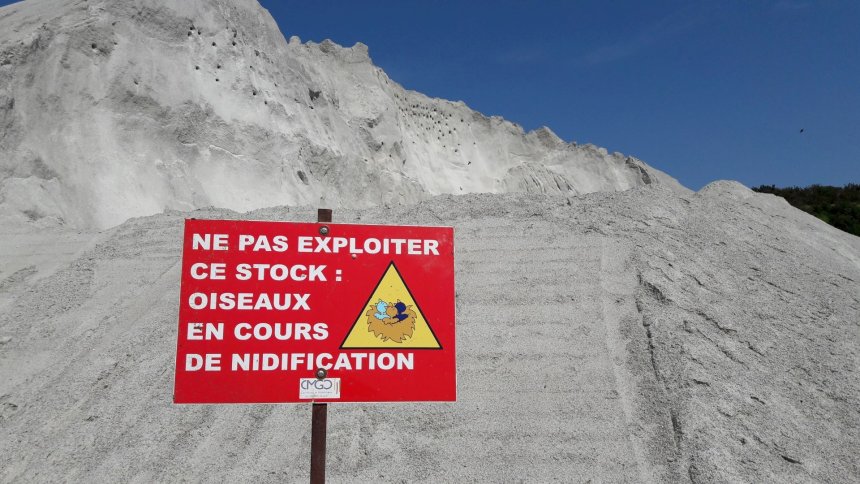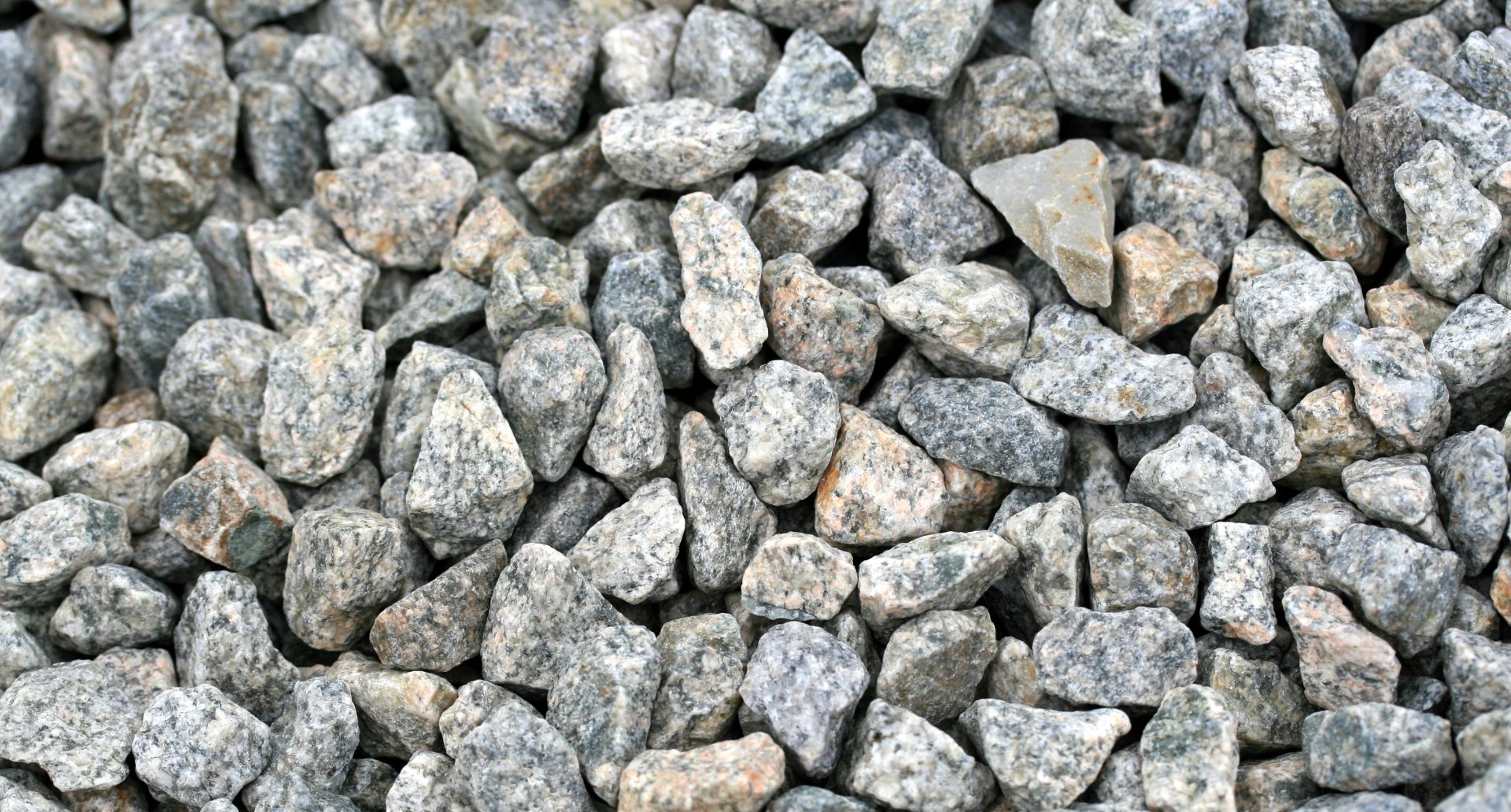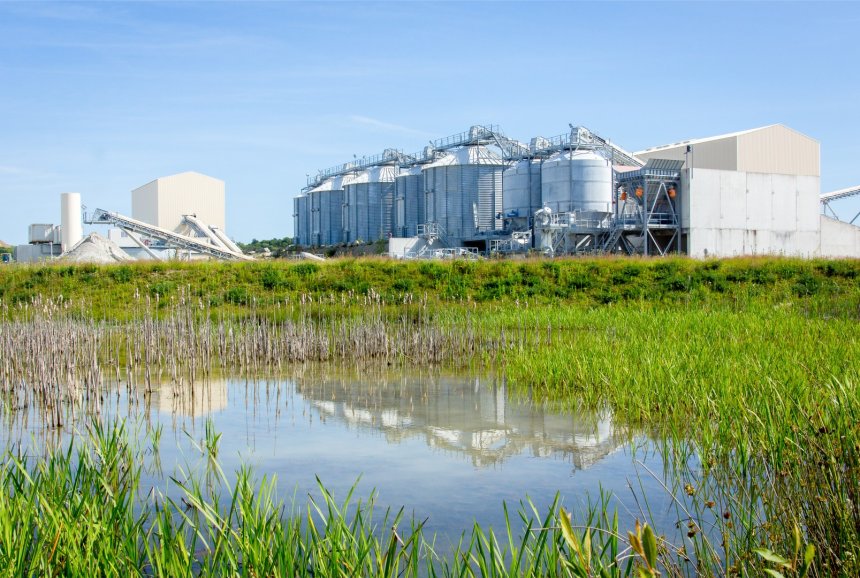Stone : mylonitic granite
Type : metamorphic rock derived from a magmatic rock
Age : 310 million years
Quarry : Poulmarh, Grand Champ (Morbihan)
A Deeply Crushed Rock
The term “mylonite” refers to any rock that has been crushed to a finer or coarser degree (from the Ancient Greek “mulôn”, meaning “mill”). The minerals within the rock retain signs of this deformation. The mylonite exposed at the Poulmarh quarry is a former granite — specifically, the Sainte-Anne d’Auray granite. This rock was crushed more than 15 kilometers deep and marks the path of a major fault in Brittany: the South Armorican Shear Zone (see page 10). Other mylonites are found along this major tectonic feature.
Perfect for Aggregate Production
This naturally crushed rock is ideally suited for producing aggregates. Aggregate refers to rock fragments smaller than 125 mm (including gravel, crushed stone, and sand). The Grand-Champ quarry, opened in the 1950s, now operates an ultra-modern processing plant — one of the largest in Europe — capable of producing over 6,000 tonnes of material per day, or about 2 million tonnes annually. It primarily supplies the local construction and public works markets.
Caution: Nesting Area
The large sand piles stored in the quarry attract migratory swallows. They come to settle there during the summer breeding season, digging their nests into the artificial sand cliffs. Quarry operators, mindful of this beneficial coexistence, create special nesting mounds — about 4 to 5 meters high — so the birds can breed there peacefully.

6.4 Tonnes of Aggregate per Person per Year
According to a report by the National Union of Aggregate Producers (UNPG), the average consumption of aggregates in France was 6.4 tonnes per inhabitant per year between 1978 and 2015. Each year, more than 400 million tonnes of aggregates supply the construction and public works sectors. Building a road or railway requires between 10,000 and 15,000 tonnes of aggregates per kilometer. A house requires between 100 and 300 tonnes, and a high school between 2,000 and 4,000 tonnes.

